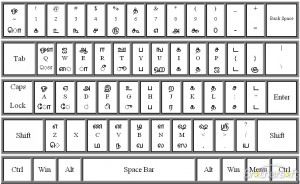
More than 55 million people speak it in India, Sri Lanka, Malaysia, Vietnam, Singapore, Canada, the United States, the U.K. and Australia.
Its writing system is best suited for literary Tamil, Centamil, but does not reflect more colloquial Tamil, Koduntamil, as well. That is why, during the 19th century, they tried to create a version that better captured the colloquial language in writing. Currently, this version is used in educational textbooks and movie scripts, for example.
Some characteristics
- In the beginning, Tamil was written on banana leaves.
- Its written system has a syllabary, not an alphabet.
- It is written horizontally from left to right.
- It is not very common to see Tamil numbers in modern texts. Rather, Arabic numerals are used.
Loanwords from other languages
Words borrowed from English undergo phonetic changes and are adapted to Tamil: pan (bun) is written as pan; kappi (coffee) as kopi, kOrt (court) as kot. Likewise, many Tamil words have become loanwords in Sri Lanka.
There are other loanwords from English and Hindi, which are used in daily life in northern India. These loanwords are written in the same way they are pronounced. For example, the English: bus, cycle, car, office, late, post, bank, and coffee (pas, caikkil, kaar, apis, let, post, pank and kaappi) are written in Tamil but they are pronounced as in the English.
Some Tamil speakers prefer the loanwords to native words. Others, on the other hand, only use them if there is no equivalent in their own language.
For example, these English words exist in colloquial Tamil: leave, stamp, rail, station and telephone; but they also have an equivalent term in the native language: vitumuRai , tapaaltalai, pukaivaNTi nilaiyam y tolaipEci.
As we have seen in other articles dealing with Indian languages, we cannot assume that a person who understands and even translates an Indian language can also translate another. Each language deserves its own translator…
If you have any questions about these languages, please consult us at Translation Services.
